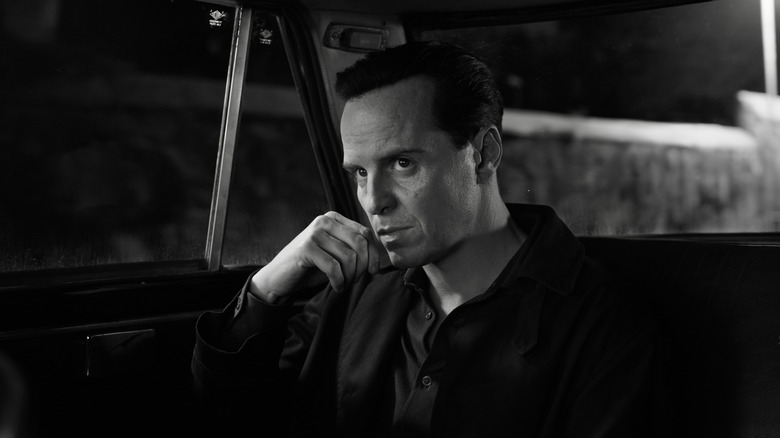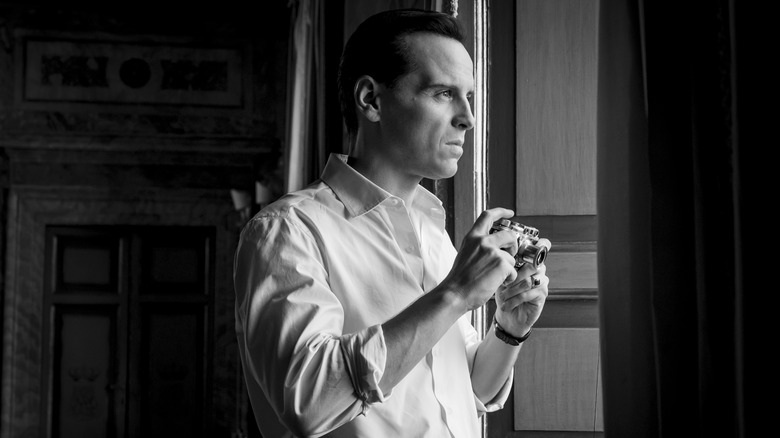Why Netflix Users Are Divided Over Andrew Scott's Ripley Series
Andrew Scott's "Ripley" series is proving to be a misfire for some Netflix users. Adapted from the '50s crime novel "The Talented Mr. Ripley," the show has received mostly positive reviews from critics. It has an 86% score on Rotten Tomatoes, making it a definitive hit for the streaming service. However, Netflix viewers are taking issue with "Ripley" being in black and white. "I'm trying to get into 'Ripley' but them filming it black and white is really throwing me off," expressed X (formerly, known as Twitter) user @bastylefilegirl. This sentiment was echoed by dozens of other Netflix subscribers, like @ds00za, who questioned "Why [the] hell did they do 'Ripley' in black and white???"
Making the series black and white is an interesting creative choice. Even Looper critic Akos Peterbencze was skeptical of the decision in their 6.5/10 review of "Ripley." "The black and white dulls the Italian Riviera and deprives its vivacious colors and effervescent atmosphere that make the country so majestically appealing," they wrote. "Though it's a conscious and thematic choice, it's hard to overlook how many nuances we miss out on (the luscious clothes, the breathtaking panorama, the vivid paintings) because of it."
While Peterbencze was mixed on the use of black and white, some fans adore the decision. "The [d]irector of [p]hotography for 'Ripley' needs an award. Almost every frame is a work of art shot completely in [b]lack and [w]hite," shared @ALJVD1.
Why is Netflix's Ripley in black and white?
"Ripley" is just the latest take on the iconic Patricia Highsmith novel. The most pronounced adaptation is the 1999 flick "The Talented Mr. Ripley," which differs from the book. Fans of 2023's "Saltburn" should particularly check out the Matt Damon psychological thriller, which was acclaimed at the time of release. With so many iterations out there, Andrew Scott's version had to go in a bold new direction to stand out. While many Netflix viewers might find the use of black and white in "Ripley" to be gimmicky, creator Steven Zaillian found it to be a sound decision for his vision. "The edition of the 'Ripley' book I had on my desk had an evocative black-and-white photograph on the cover," he told Vanity Fair. "As I was writing, I held that image in my mind. Black and white fits this story — and it's gorgeous."
This isn't the first time one of Zaillian's projects was filmed in black and white. 1993's "Schindler's List," which he wrote, utilized the format.
In a separate interview with IndieWire, Zaillian pointed out how he wanted to juxtapose Highsmith's bright Italian setting with a more stark, bleak color scheme. "I just couldn't imagine that taking place in a beautiful Italian setting with bright blue skies and colorful outfits and things like that," he said. Some fans may not agree with the creative's decision, but it seems like the reasoning was on point.
Enjoyed "Ripley" because of its visual aesthetics? Here are 15 great modern movies that were filmed in black and white.

